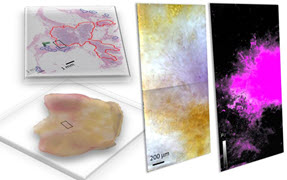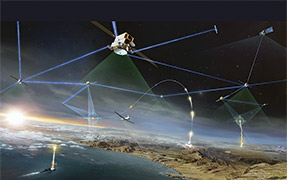Hyperspectral sounder provides widely useful data
The Atmospheric Infrared Sounder (AIRS) is a high-spectral resolution infrared instrument that was funded by NASA to support near-real-time weather forecasting and climate research.1 Its grating-array imaging spectrometer covers the 3.7–15.4µm spectral region using 2378 spectral channels, and has four visible light and near-infrared channels bore-sighted with its infrared channels.2 Launched into polar orbit at 705km altitude on NASA's Earth Observing System Aqua spacecraft on 4 May 2002, it achieves global coverage twice per day with exceptional absolute radiometric calibration accuracy and stability documented over the past three years.2 The instrument and spacecraft are approaching five years in orbit without signs of significant degradation. AIRS data is used for weather forecasting, climate research, and environment research by scientists at government-funded research institutions and universities.
Three years of comparison with radiosonde observations1 shows that AIRS data meets accuracy standards at mandatory pressure levels under cloudy and clear conditions, as well as over land and oceans. Assimilation of AIRS radiances into operational weather forecasts by NOAA (US), the Met Office (UK), and the European Center for Medium-range Weather Forecasting started in 2004. AIRS had more positive forecast impact than the data from any one of the other instruments already being assimilated. By adding AIRS spectral radiances, the reliable forecast was extended2 by six hours in six days.3
The four years of hyperspectral data already accumulated from AIRS constitutes one of the most powerful tools currently available to climate researchers for gaining insight into climate processes, particularly in the areas of cloud feedback and water vapor, the dominant greenhouse gas in Earth's climate system. AIRS water-vapor retrievals, which have been verified using radiosonde observations, have revealed that Intergovernmental Panel on Climate Change climate model representations4 over-report water vapor in the upper troposphere under clear conditions, thereby overestimating the related greenhouse effect.
AIRS data has also been used to critique the National Centers for Environmental Prediction representation of the Madden-Julian Oscillation,5 an equatorial pattern of intraseasonal rainfall that strongly impacts global tropical and subtropical atmospheric circulation.
Additionally, the well-characterized relative-humidity fields derived from AIRS data are key for accurate representation of clouds and associated cloud feedback, which are the weakest points of current climate models. Plausible super-saturation incidents have been identified in AIRS data.6 These are consistent with other observations, but super-saturation is not allowed by current climate models.
AIRS radiances are sensitive to the concentration of several minor gases (ozone, carbon monoxide, carbon dioxide, sulfur dioxide, and methane) and to airborne particulates.1 With four years of data already available and predictions of a 12-year lifetime, the impact of AIRS data on environment research has just started.
Hartmut Aumann is a senior research scientist at Caltech's Jet Propulsion Laboratory. He received NASA's Exceptional Scientific Achievement medal twice, in astrophysics in 1984 for his work on the Infrared Astronomy Satellite (IRAS), and for the calibration of AIRS in 2004. His research interest is climate processes.



